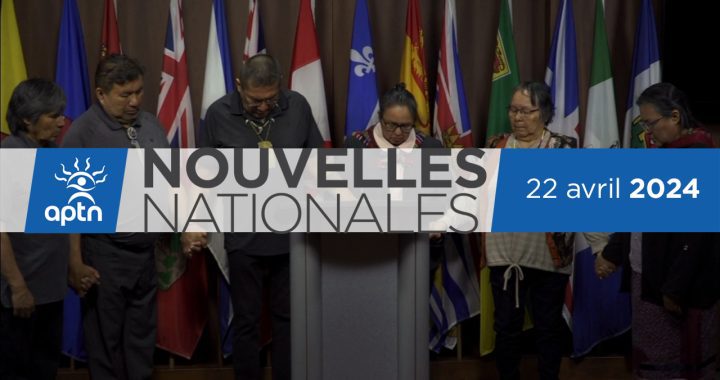An Ojibwe language strategy in Ontario, called Anishinaabemodaa, is working towards revitalizing Anishinaabe language throughout Ontario.
The program works with youth in pre-schools all the way up to post-secondary education and anyone who just wants to learn.
The program is a partnership between the Rainy River School Board, Seven Generations Education Institute and SayITFirst with ten First Nation communities in Ontario. The program employs roughly 40 full-time workers and it’s estimated around 150 community members are a part of the initiative.
SayITFirst wants to reduce language loss and produce more speakers of Indigenous language.
“It’s their creator, it’s their language and every action we take is helping somebody connect back. So it’s not about ego and it’s not about I did this and you did that, it’s how do we connect people back to their culture and their language and I think, we’ve been unwavering on that,” said Mike Parkhill, founder of SayITFirst.
Educational resources from the program include 52 books, 23 language kits, and most recently, three new apps that can also be accessed online. All of the resources are for people to learn and practise their skills with the language.
Heather Campbell is the director of education at Rainy River school district school board.
She said students taking Ojibwe courses in Fort Frances have been on the rise since the initiative started.
“There was a time where French was the dominant language where you see more students taking French and very few students enroll past grade nine. Now we are equal to and in some cases surpassing the number of French students so that speaks a lot to the relevance, the importance of language to our students. But also they’re seeing it as a possibility in their futures,” she said.
In Ontario, language is a requirement for high school graduation, however, Ojibwe language classes fall under the open level course, which cannot be used as a language course on post-secondary applications.
Campbell said instead of waiting for university and college courses to be developed, they decided to take matters into their own hands.
“We advocated to the ministry of education that we needed something now. That students taking Ojibwe language as they proceed through high school need to see that as a significant aspect of their future, and of their careers, and of their post-secondary education,” she said.
“So we were granted approval to proceed and develop a course, which we did locally with working with seven generations education institute. And it’s the first of its kind, so we are seeing students applying to post-secondary and using that course in their applications.”
Anishinaabemodaa creates and promotes four designated pathways focusing on language. Families who want to teach their children the languages, students of all ages who want to learn Anishinaabemowin, individuals who want a career as a teacher or an Early Childhood Educator, and individuals who want to pursue other careers where knowledge of Anishinaabemowin is beneficial.
Seven Generations is an Indigenous led educational organization that provides community-based and student-centered learning opportunities through language and culture.
Brent Tookenay is president and a member of Couchiching First Nation.
He said the importance of understanding Anishinaabemowin without translation is key to getting the full effect of the language and culture.
“Being able to sit there in a ceremony and understand what the elder is saying in the language because as you know, literal translation of Anishinaabemowin to English, there’s things that are lost. You need to understand the Anishinaabemowin in ceremony and what we’re doing on our communities because there’s things lost when you translate it to English and so that’s what’s really important,” he said.
The program has seen over 400 people participate in some way since 2017.
The Anishinaabemodaa initiative is a two-pronged approach, designed to provide Indigenous language teachers with programming and materials, at the same time as increasing the numbers of students beginning schooling in formal Ojibwe language instruction.
According to Parkhill, to become comfortable in the language, a learner needs to commit to 20 hours per week for three years.
“This is what our goal was, to ultimately get people speaking the language for 20 hours a week for three years. And then get the language back into the home. If it’s at the sole domain of a school, it’s not going to survive,” said Parkhill
One of the goals of the program is to eventually have those youth learning now to grow up and teach the language to the next generation.
All of the program’s resources are available for free online for anyone to access.









